Ever stared at a London broil in the grocery store, wondering how to turn this tough cut into a tender, juicy dinner? Are you perplexed about the perfect method of marinating, broiling, or even grilling this piece of meat? Well, fellow home cooks, it’s time to unravel the mystery of cooking a not-so-tough London broil.
To cook a tender London broil, begin by preparing a marinade that includes acidic ingredients like vinegar or citrus juice, which tenderize the meat. Allow the London broil to marinate for at least four hours, but ideally overnight. When it’s time to cook, broil or grill the meat over high heat for about 5 minutes per side for medium-rare, ensuring the internal temperature reaches 135°F.
In this comprehensive guide, we’ll unravel the techniques for mastering the art of cooking London broil, turning a notoriously tough cut into a centerpiece of tenderness and flavor. We’ll delve into marinades, explore cooking methods, share expert tips, and even suggest the perfect beverage pairings. Ready your aprons, it’s time to toast and roast this London broil to perfection!
- Best Cuts For London Broil
- What Does London Boil Taste Like
- London broil vs Top round
- How to thaw London broil
- Preparing for the Perfect London Broil
- The Cooking Process
- Slicing and Serving the London Broil
- The Perfect Beverage Pairings
- Best Grills For London Broil Grilling
- FAQ’S
- Key Takeaways: Your Path to the Juiciest London Broil
Best Cuts For London Broil
Choosing the right cut of meat is the first step in creating a tender and flavorful London broil. Despite the name, London broil is actually a cooking method, not a specific cut of meat. However, certain cuts are often used and are referred to as “London broil” in many grocery stores. Here are the best cuts for preparing London broil:
- Top Round: This is the most commonly used cut for London broil. It’s lean and economical, making it a popular choice. However, it’s also a fairly tough cut, so it benefits greatly from the tenderizing effects of a marinade.
- Flank Steak: Flank steak is another option for London broil. It’s leaner than top round and has a strong beef flavor. This cut also requires marinating to break down the tough muscle fibers.
- Skirt Steak: Skirt steak can also be used for London broil. This cut is flavorful and tenderizes well with marinade, but it’s typically thinner than top round or flank steak, so it cooks quickly.
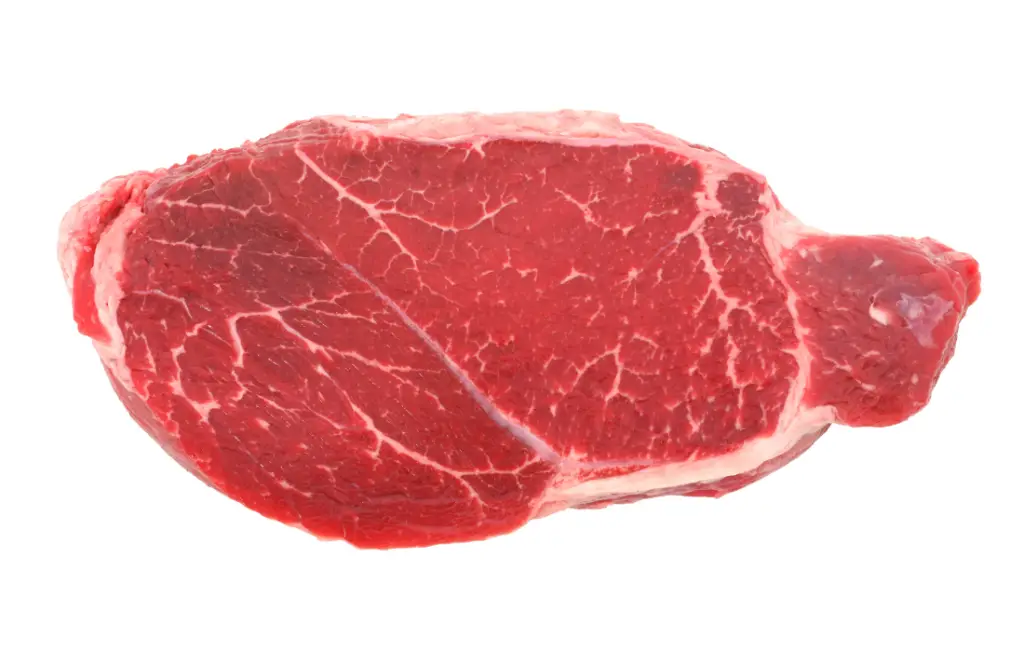
Remember, no matter which cut you choose, the key to a tender London broil lies in a good marinade and careful cooking to avoid overdoing it. With the right preparation, even these tougher cuts of meat can become succulent and tasty.
What Does London Boil Taste Like
London broil, typically prepared using a top round steak, has a robust beefy flavor. Since it’s a lean cut, it doesn’t have the rich, marbled fat that you might find in cuts like ribeye or T-bone, but that doesn’t mean it lacks in taste.
The key to a flavorful London broil is in the preparation. It’s often marinated before cooking, which infuses the meat with the flavors of the marinade ingredients. Common ingredients can include soy sauce, vinegar, citrus juices, garlic, herbs, and spices. The result is a savory, tangy, and aromatic flavor profile that complements the natural taste of the beef.
When cooked properly, ideally to a medium-rare or medium degree of doneness, London broil can be juicy and tender with a hearty, satisfying taste. Remember to cut it against the grain for maximum tenderness.
London broil vs Top round
Understanding the difference between London broil and top round can be a bit confusing, largely because London broil is more a method of preparation and cooking than it is a specific cut of meat. However, in many grocery stores and recipes, you’ll find specific cuts labeled as “London broil.” So, let’s clear up the confusion:
London Broil: As mentioned, London broil originally referred to a method of preparation and cooking, not a specific cut of beef. The term described a process of marinating, broiling or grilling, and thinly slicing against the grain to ensure tenderness. However, over time, cuts of beef that are typically used for this method, such as top round and flank steak, began to be labeled as “London broil” in many supermarkets.
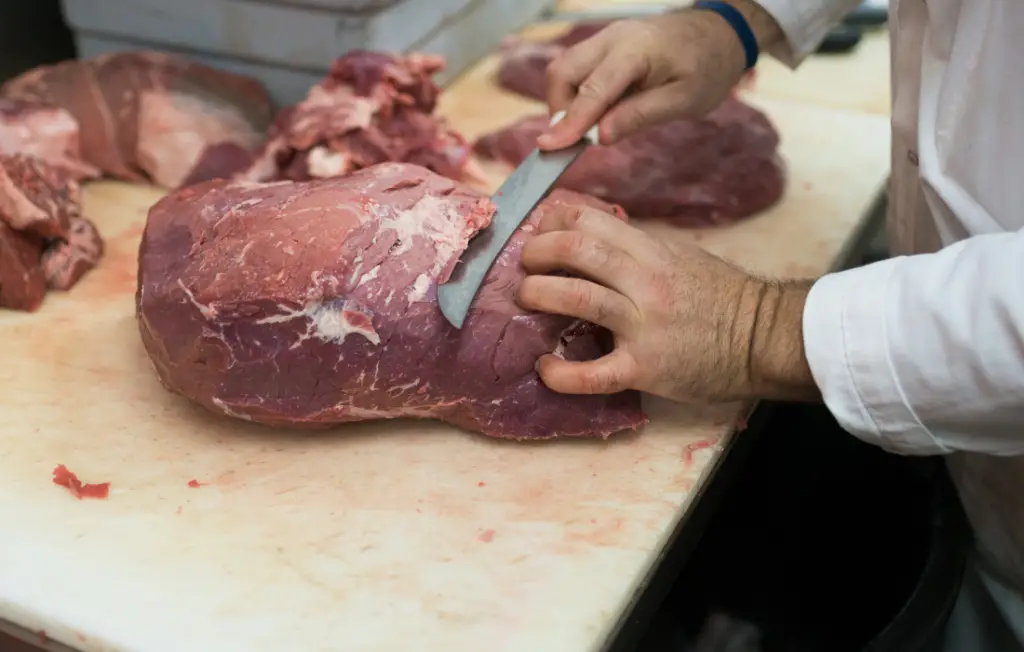
Top Round: Top round comes from the rear muscle of the cow, making it a lean and somewhat tough cut of beef. It’s often used for roasting, slow cooking, or indeed, for preparing London broil, due to its lean nature and its ability to take on flavors through marinating. It is also often used to make roast beef and deli-style roast beef sandwiches.
In summary, London broil is a cooking method that often uses a top round steak, but the terms are not interchangeable. Top round refers to a specific cut of beef, while London broil refers to a way of preparing and cooking that beef.
How to thaw London broil
Thawing London broil properly is essential to ensure even cooking and to prevent potential foodborne illnesses. Here are the best methods to safely thaw your London broil:
- Refrigerator Thawing: This is the safest and most recommended way to thaw your London broil. It keeps the meat at a safe temperature throughout the thawing process. Place your frozen steak on a plate or in a shallow pan to catch any drips, then place it in the refrigerator. Keep in mind that this process is slow, and it can take up to 24 hours for a one-pound steak to thaw. Larger cuts may require more time.
- Cold Water Thawing: If you’re short on time, you can use the cold water thawing method. Place your frozen steak in a resealable plastic bag to prevent water from damaging the meat. Then, submerge the bagged steak in cold water. Change the water every 30 minutes to keep it cold. This method is faster than refrigerator thawing, typically thawing one pound of meat in an hour or less. However, remember that once the meat is thawed using this method, it should be cooked immediately.
Never thaw meat at room temperature, as this can encourage the growth of harmful bacteria. Whichever method you choose, always cook your London broil to a minimum internal temperature of 145°F (63°C) to ensure it’s safe to eat.
Preparing for the Perfect London Broil
To transform a tough cut into a tender and juicy London broil, preparation is essential. The heart of this preparation lies in the marinade. As renowned chef Gordon Ramsay explains, marinating not only infuses the meat with flavor but also tenderizes it, breaking down tough muscle fibers.
One popular marinade recipe that hits all the right notes includes soy sauce, honey, garlic, onion, and a splash of red wine. Soy sauce, thanks to its high salt content, helps to tenderize the meat while also adding a savory depth of flavor. The honey provides a touch of sweetness and aids in creating a lovely caramelized crust on the steak.
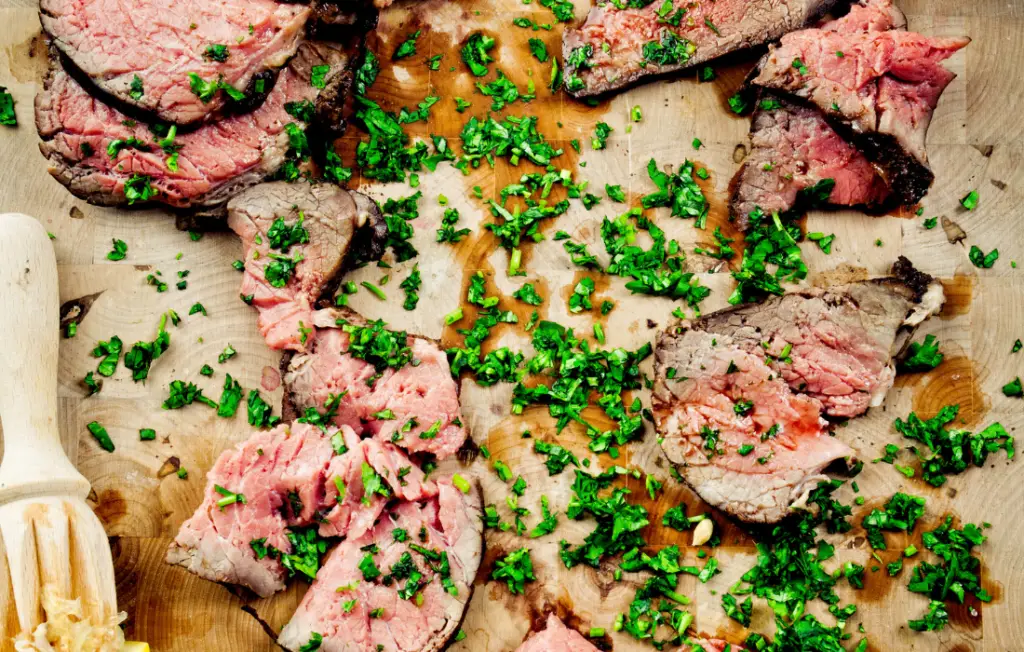
A more exotic approach could be a fusion marinade that takes inspiration from my Bahamian roots. This marinade includes pineapple juice (which contains a natural meat tenderizer, bromelain), fresh lime, garlic, onion, and a touch of chili for heat.
Regardless of the marinade you choose, remember that time is of the essence. The longer the meat marinates, the more tender it will become. Aim for a minimum of four hours, but if you really want to impress your guests, let that London broil soak up the marinade overnight. Now that’s what I call preparing for a “toasted and roasted” London broil!
The Cooking Process
Once you’ve allowed your London broil to marinate, it’s time to bring on the heat. Here are three different ways to cook your London broil to perfection:
- Oven-Baked London Broil Method: Preheat your oven’s broiler and place the oven rack about 4 inches away from the heat source. Remove the marinated steak from the refrigerator and let it come to room temperature. Place it on a broiler pan and broil for about 5 minutes per side for medium-rare. Remember to flip the steak only once during cooking.
- Grilling London Broil Method: Preheat your grill to high heat. Place the marinated steak on the grill and sear each side for about 1-2 minutes. Then, reduce the heat to medium, move the steak to a cooler part of the grill, and continue grilling for about 5 minutes per side for medium-rare.
- Slow-Cooked London Broil Method: Place the marinated steak in a slow cooker and add some beef broth for additional moisture. Cook on low for about 6-7 hours or until the steak is tender.
Comparison Table of Techniques:
| Cooking Method | Time | Heat Level |
|---|---|---|
| Oven-Baked | Approx. 10 mins | High |
| Grilling | Approx. 12-14 mins | High to Medium |
| Slow-Cooked | 6-7 hours | Low |
The ideal internal temperature for London broil, according to the USDA, is 145°F for medium-rare, followed by a 3-minute rest time. However, for those who prefer their steak a bit more done, aim for 160°F for medium and 170°F or higher for well done.
Common questions people ask about cooking London broil include “Should London broil be covered when baking?” (No, it should be uncovered to achieve a nice, caramelized exterior) and “How long should London broil rest after cooking?” (It should rest for about 10 minutes to allow the juices to redistribute).
Remember, every cut of meat and every grill or oven can behave a little differently, so these are guidelines, not hard rules. The goal is to enjoy the process, learn from it, and, of course, end up with a delicious, tender London broil!
Print
Easy Tender London broil
This easy and flavorful London broil recipe ensures you end up with a tender, juicy, and delicious beef dish that’s perfect for a hearty family dinner.
- Total Time: 30 minutes (excluding marination time) Yield: 6 servings
- Yield: 6 servings 1x
Ingredients
- 2 lbs London broil (top round or flank steak)
- 1/2 cup soy sauce
- 1/2 cup balsamic vinegar
- 4 cloves of garlic, minced
- 2 tablespoons of honey
- Salt and pepper to taste
Instructions
- Combine soy sauce, balsamic vinegar, minced garlic, honey, salt, and pepper in a bowl to create the marinade.
- Place the London broil in a sealable bag and pour in the marinade. Ensure the meat is fully coated.
- Seal the bag and refrigerate for at least 4 hours, or overnight for best results.
- Preheat your grill or broiler. If using a grill, aim for medium-high heat.
- Remove the London broil from the marinade and place it on the grill or under the broiler.
- Cook for about 7-9 minutes on each side for medium-rare, checking the internal temperature until it reaches 130-135°F (54-57°C).
- Remove the London broil from the heat and let it rest for at least 10 minutes before slicing against the grain.
Notes
Marinating time can vary based on personal preference, but for the best results, marinate the London broil overnight. Remember to let the meat rest before cutting to ensure it stays juicy and tender.
- Prep Time: 10 minutes (excluding marination time)
- Cook Time: 15-20 minutes
- Category: Main Course
- Method: Grilling/Broiling
- Cuisine: American
- Diet: Gluten Free
Slicing and Serving the London Broil
After you’ve marinated, cooked, and admired your London broil, you might think you’re at the finish line. But hold onto your knives, folks! The slicing technique for London broil is just as crucial as the cooking process. Slice your London broil across the grain – not with it – to shorten the meat fibers and achieve a more tender bite. Now, isn’t that a ‘cut’ above the rest?
But wait, there’s a little more patience needed before you dig in. Resting time is not just for the cook; it’s essential for the steak too! Rest your London broil for about 10 minutes after cooking. This allows the juices to redistribute throughout the steak, keeping it moist and flavorful. Now that’s what I call a well-rested piece of meat!
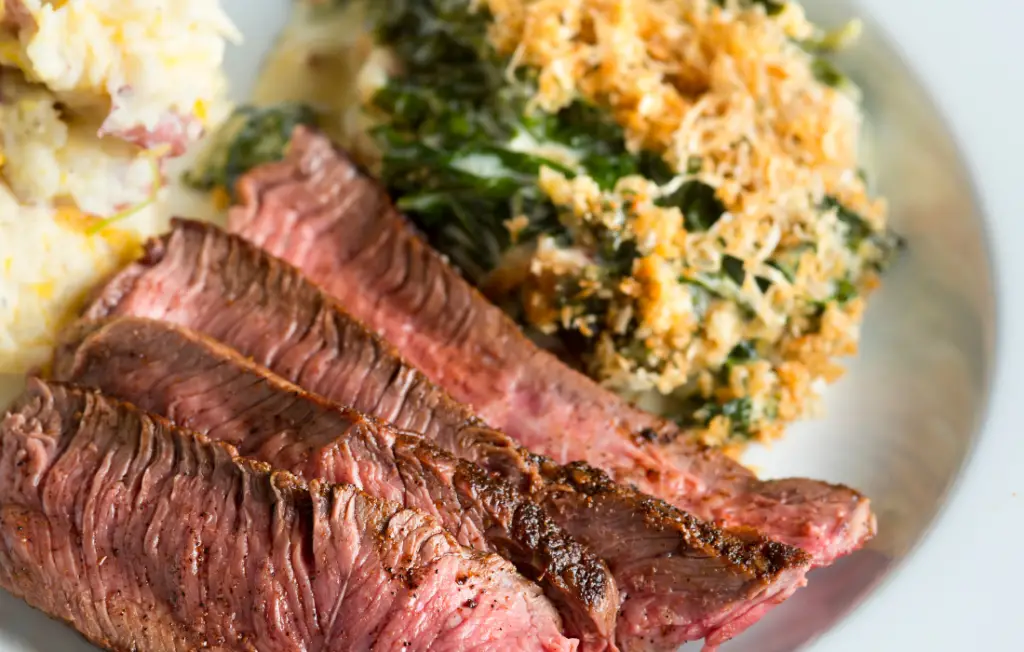
The Perfect Beverage Pairings
Now, let’s talk about the liquid love that’s going to accompany your London broil. A bold red wine like Cabernet Sauvignon or Malbec is a classic choice, with their deep fruity flavors and tannins providing a fantastic counterpoint to the rich, savory meat.
Stats Table:
| Wine Type | Notes |
|---|---|
| Cabernet Sauvignon | Dark Fruit Notes, Strong Tannins |
| Malbec | Black Cherry Notes, Medium Tannins |
Not a wine drinker? No problem! A dark beer like a stout or porter can also stand up to the flavors of the London broil. Or, if you prefer non-alcoholic beverages, a tart cherry or pomegranate juice can provide a lovely balance of sweetness and acidity. So here’s to finding the perfect drink to toast your London broil triumph!
Best Grills For London Broil Grilling
FAQ’S
Can London broil be medium rare?
Yes, London broil can be cooked to medium-rare. In fact, it is often recommended to cook London broil to no more than medium-rare or medium to prevent the meat from becoming overly tough. The ideal internal temperature for a medium-rare London broil is 130-135°F (54-57°C).
Can you freeze London broil?
Yes, you can freeze London broil. It’s best to freeze the meat in a vacuum-sealed or air-tight freezer bag to prevent freezer burn. Properly stored, frozen London broil can last up to 12 months in the freezer.
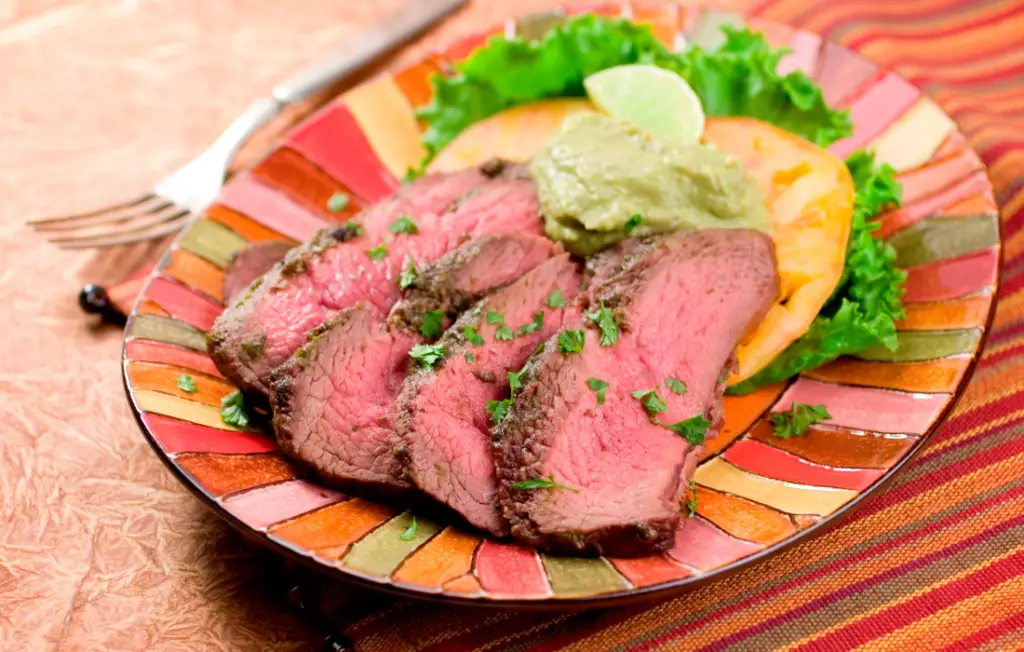
How long to marinate London broil?
For the best results, you should marinate London broil for at least 4 hours. However, for a more robust flavor and more tender meat, it’s best to let the London broil marinate in the refrigerator overnight.
How to tenderize London broil?
There are several ways to tenderize London broil. One method is to use a meat mallet to physically tenderize the meat before marinating. Another method is to use a marinade with acidic ingredients (like vinegar or citrus juice), which helps to break down tough muscle fibers. It’s also crucial to slice the cooked London broil across the grain, which makes the meat easier to chew.
Key Takeaways: Your Path to the Juiciest London Broil
As we’ve journeyed through the process of creating the perfect London broil, there are a few crucial elements to remember to ensure you’re serving up a tender, juicy, and flavorful dish.
Firstly, the selection of your meat plays a pivotal role. Remember, a top round or flank steak are both excellent choices for your London broil. They’re lean, flavorful, and perfect for the marinade to work its magic.
Speaking of marinade, never skip this step! Marinating your London broil not only imparts a great depth of flavor but also tenderizes the meat. Make sure to marinate for at least four hours or, better yet, overnight.
The cooking method is also vital. Whether you prefer the broiler, grill, or oven, always monitor your meat’s internal temperature. It’s best to aim for medium-rare or medium doneness to prevent the meat from becoming overly tough.
Once your London broil is cooked, let it rest! This allows the juices to redistribute, resulting in a more tender and flavorful slice. And when you do slice, remember to go against the grain.
Lastly, don’t forget to enjoy the process. The beautiful thing about cooking is that it’s both a science and an art. You can follow the best practices, but don’t be afraid to add your own personal touch. Maybe it’s a secret ingredient in your marinade or a particular way you like to slice your meat. As I often say, “if it tastes good, it’s good!” After all, the best cooks are those who cook with heart.
So there you have it, my friends – your path to mastering the London broil.

